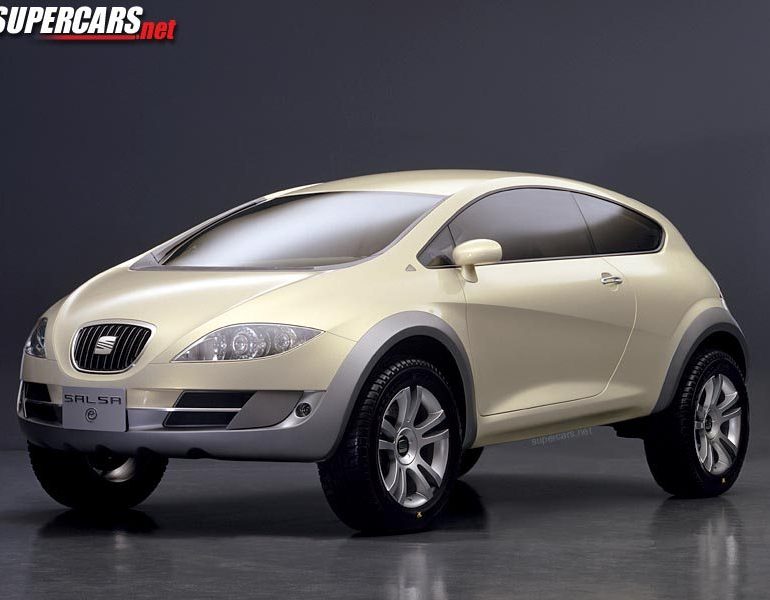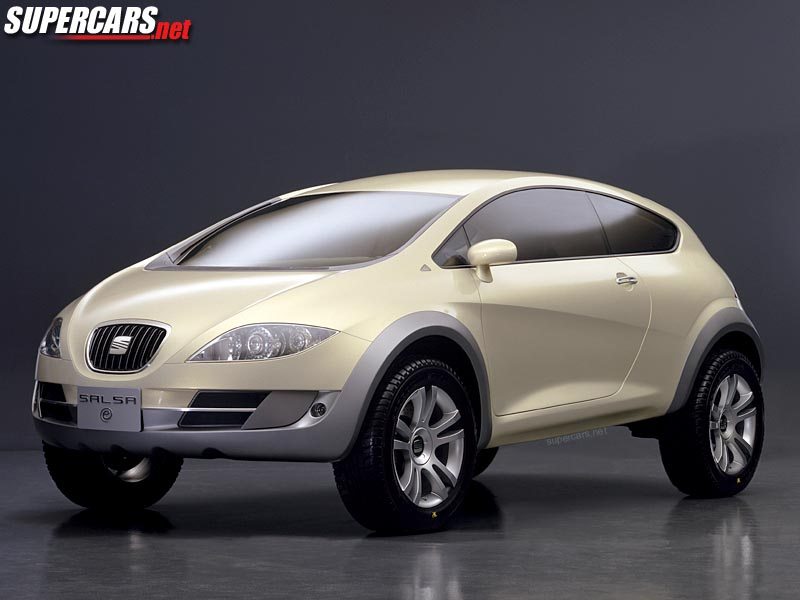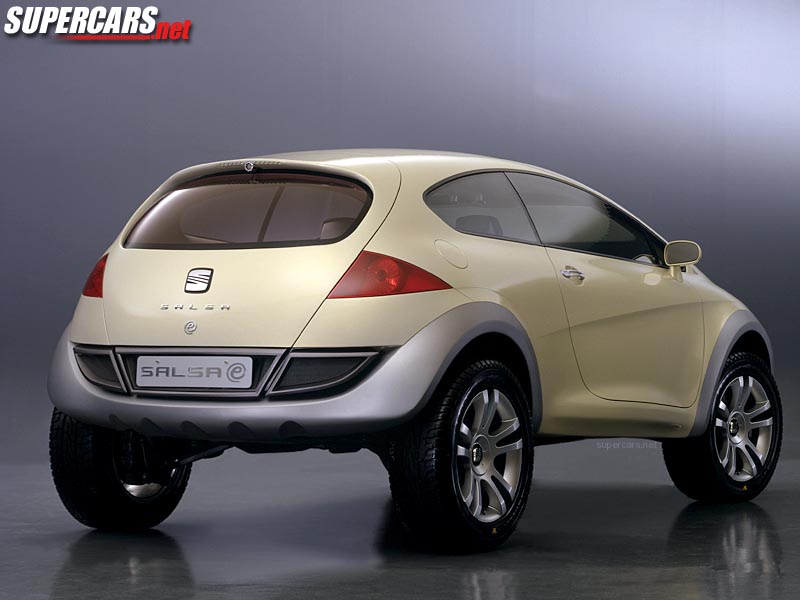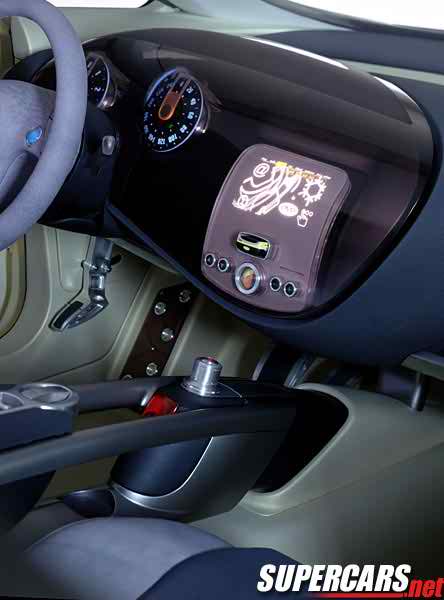2000 Seat Salsa Emocion Concept
The driver of the Seat Salsa to chooses between three distinct driving environments. The interior appearance and information display on the instrument panel change by activating a switch located on the floating central console that separates the front seats.
The key to the Seat Salsa ‘s road surface adaptability is its height-variable suspension depending on the selected driving environment: in Street mode, it is 240 mm off the ground; in Off Road it is 310 mm, 70 mm higher, the Sport mode sets it at an intermediate height. This control is activated by four gas pneumatic bellows, combined with front McPherson strut suspension and a multilink axle at the rear.
Street. In this position, the Salsa is ideally suited for city driving: normal height, automatic gear change, power steering, wide angle rear view video, conventional instrument panel and street navigator. On the exterior, the radiator grille is open widest for maximum engine cooling in slow urban traffic conditions.
Sport. In this mode, the Salsa adopts a conventional All Road configuration: higher suspension (the gas pneumatic system sets automatically in the intermediate position), and more complete information on the instrument panel, which features a central dial showing information on direction, altitude and lateral incline, that complements the GPS navigator system.
Off Road. With this function, the Salsa features its most adventurous behaviour. Only the compass on the central dial appears; the suspension adjusts to its highest position, and on the front end, sliding panels reduce the radiator grille opening, protecting it from rocks and branches. At the same time, side spotlights appear that facilitate night driving over abrupt terrain and winding roads. Furthermore, the exterior mirrors fold down and two video cameras go into operation, which are integrated in the mirror housing.
These cameras, which can be disassembled for autonomous use, are equipped with night vision, becoming the driver’s eyes for instrument driving through the panel installed in the roof module. They can also be used as handheld video cameras to record the developments of each adventure on the DVD equipment.
Story by Seat
In Detail
| submitted by | Richard Owen |
| engine | V6 |
| displacement | 2791 cc / 170.3 in³ |
| power | 186.4 kw / 250.0 bhp @ 6200 rpm |
| specific output | 89.57 bhp per litre |
| bhp/weight | bhp per tonne |
| torque | 402.68 nm / 297.0 ft lbs @ 3200 rpm |
| driven wheels | Transverse Front Engine / AWD |
| front tires | 225/55 R18 |
| rear tires | 225/55 R18 |
| front brakes | Vented Discs w/ABS |
| f brake size | mm / in |
| r brake size | mm / in |
| front wheels | F 45.7 x 20.3 cm / 18.0 x 8.0 in |
| rear wheels | R 45.7 x 20.3 cm / 18.0 x 8.0 in |
| curb weight | 1660 kg / 3660 lbs |
| wheelbase | 2591 mm / 102.0 in |
| front track | 1615 mm / 63.6 in |
| rear track | 1585 mm / 62.4 in |
| length | 4162 mm / 163.9 in |
| width | 1886 mm / 74.3 in |
| height | 1593 mm / 62.7 in |
| transmission | Tiptronic 5-Speed Manual |
| gear ratios | :1 |
| top speed | ~233 kph / 144.8 mph |
| 0 – 60 mph | ~7.4 seconds |







